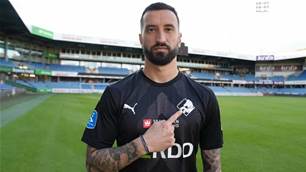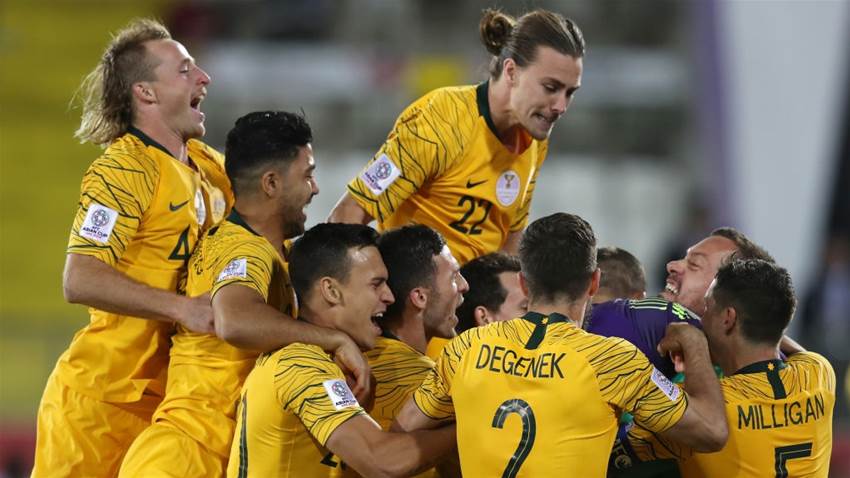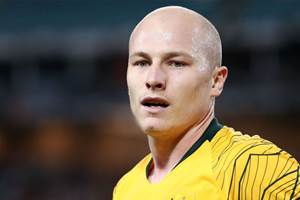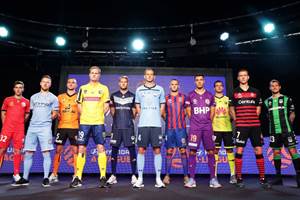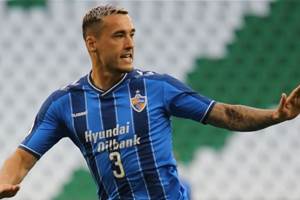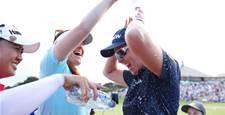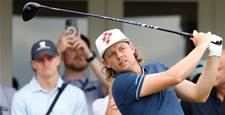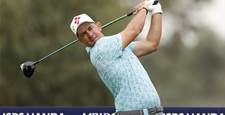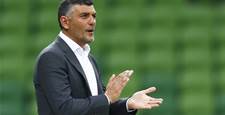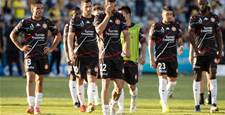The Socceroos squad for next month's 2022 World Cup qualifiers has been named and considering the enormity of the task, it's worth taking a closer inspection at Australia's strengths and weaknesses.
The main challenges Australia will face are external factors: this is a new-look, inexperienced squad, missing some key creative players, that hasn't had any time to play or train together since 2019.
They'll be facing decent mid-tier Asian opposition that has been playing and training regularly for the entire COVID-19 period. They'll also be playing four games in 16 days in hostile conditions, in their opponent's home turf.
The main advantage the Socceroos have coming into these fixtures is that they're already two points clear at the top of Group B with a game in hand.
However, there are some other pros and cons that are inherent in Graham Arnold's squad selection: the hand that he's playing and the hand he's been dealt.
SOCCEROOS SQUAD ANALYSIS & FORM GUIDE
For the first time in recent memory, almost the entire Socceroos squad is playing regularly at club level, most at a decent European level, which has been a rather quick and under the radar development over recent months.
QUESTION MARKS
Apostolos Giannou is the most surprising selection in this squad as he brings neither youth, nor form, nor regular game time to the table. He spent most of the season playing a bit-part for Greek Super League side OFI Crete, before he was frozen out of the team entirely in December after 13 games without a goal or assist.
However, he does bring experience into the forward line and a separate dimension to his game, which gives Arnold increased tactical flexibility. Australia isn't blessed with traditional big men who understand the national team set up, so Giannou's inclusion has its own advantages.
Adam Taggart is the other squad selection who essentially hasn't been playing at all since moving to J-League side Cerezo Osaka.
He's faced significant visa issues since leaving the K-League where he was in barnstorming form, so he becomes a slightly unknown quantity in this squad, who'll be tested up against the incredible form of Jamie Maclaren and Nikita Rukavytsya.
Mat Ryan has played very regularly until this season, where he's been a back-up in 2021 at Arsenal. It's uncertain how that lack of game-time will affect him as it's an unusual position for him to be in, but given his level, it's also not an outright cause for concern.
Finally, there's Danny Vukovic, who also makes the squad based on his tremendous club-form pre-departure from Belgian club KRC Genk. He's been a very reliable performer for a long time now, but is unlikely to feature in these games regardless.
Apart from these four, the Socceroos squad makes for some very promising reading on a game-time basis.
KNOWN QUANTITIES
Aziz Behich, Jackson Irvine and Brad Smith are all back playing regularly at a good level after lengthy lean spells in the recent past. These three all enter the national team after periods of particularly strong club form as well.
Trent Sainsbury has been slightly more disappointing recently at Kortrijk, and has been in and out of his Belgian club's lineup. But he still broadly fits within this category after his entire season is taken into account.
Mathew Leckie has been playing fairly regularly in Germany at a good level for a strong club side.
He hasn't played consistently for a long time, and has had large periods where he's been absent over the past few years, combined with injury issues. However, he's also a very experienced campaigner, so the fact he has been starting games for Hertha Berlin over the past few weeks is very promising for the Socceroos.
Chris Ikonomidis and Mitch Duke also fit within this category, now they're playing well and injury-free in the A-League.
RISING POWERS
Brandon Borrello and Ajdin Hrustic are tremendously exciting prospects, who despite their lack of Socceroos appearances, have been in strong club form for a long period, and around the national team for quite a long time.
Both are only playing semi-regularly, but are definitely valued by their club sides at a very good level, and have played more regularly of late.
While Graham Arnold knows what he can get from these two wingers, how they'll adapt to the national team set-up remains to be seen.
Kenny Dougall and Riley McGree are two of the comeback kings of this squad. They're now playing more regularly than Borrello and Hrustic, but are coming off leaner career spells.
Dougall's at the lowest level of the four, but has the advantage of versatility. He offers a potential utility that's comfortable in the backline and midfield, with a decent attacking arsenal at his disposal. He's also in a position where Australia have very little depth.
Denis Genreau has also been around the national set up before but he, Conor Metcalfe and Ruon Tongyik are much more fresh-faced than the rest of this squad.
All three enter the Socceroos in red-hot form, arriving after playing crucial roles for their A-League teams with a large amount of responsibility heaped on each.
CONSISTENT PERFORMERS
Then there's the contingent that have been performing solidly for some time.
Fran Karacic earns a nod after successfully moving from Croatia to the Italian Serie B, where he now plays a key role at a big club in Brescia. He's been a consistently strong performer at club level for nearly four years now.
Awer Mabil, Martin Boyle, Milos Degenek, Lawrence Thomas, James Holland, Andrew Redmayne, Ryan McGowan, Curtis Good and Rhyan Grant have all also been performing strongly for multiple seasons now, many for several consecutive.
Some, like Good, have raised their level and become more consistent of late, but for the most part, these are established candidates that offer reliable Socceroos propositions.
Then there are the few that are especially exciting.
THE GAME CHANGERS
Maclaren and Nikita Rukavystya offer one of the most prolific strikeforces that Australia has taken into a competitive match in recent memory.
Maclaren has 25 goals in 23 A-League appearances this season and Rukavytsya has 17 goals in 20 appearances.
Their form at club level has been nothing short of extraordinary, so it will be interesting to see how effectively Graham Arnold can transition that confidence into a very foreign national team dynamic.
This is especially the case for Rukavytsya, who has only played a few Socceroo minutes since 2017.
But given Taggart's recent goal-scoring output as well, Australia's striking positions have a huge amount of potential.
The other major standout this season has been Harry Souttar, who first fought his way into the Stoke City Championship team, and has since worked his way into contention at multiple Premier League clubs.
He's been truly phenomenal for the entire campaign.
With four goals in two Socceroos caps, the towering centreback also offers a formidable weapon at the attacking end of the pitch, which drifts him into this category over the likes of Degenek, who has also been sensational recently, but is a little more predictable.
SOCCEROOS STRENGTHS AND WEAKNESSES
This Socceroos squad has three glaring weaknesses: a lack of defensive mobility, a lack of ability to hold possession in midfield, and a lack of creative playmaking. All of these have a significant detrimental effect on Arnold's positive, attacking philosophy.
The squad has very few experienced midfield leaders, tempo setters or ball movers that can recycle possession and dictate play. This is the first time in a very long time that Australia has lacked midfield depth to quite this extent.
Australia would usually attempt to hold a high line against the Jordanians and Kuwaitis, both of which have technically skilled, quick attackers. Both of these sides, particularly Jordan, also have quick attacking fullbacks who can exploit the lack of defensive cover that centrebacks like Degenek, Sainsbury and Souttar can provide.
But Arnold has been quick to experiment with different formations in the past.
TACTICAL SHIFTS
It's likely that without Aaron Mooy and Tom Rogic in the squad, Arnold will shift back towards a variation on a 4-3-3, compared to the 4-4-1-1 he briefly trialled before the COVID-19 pandemic or 4-4-2 he's used previously.
This favours the Socceroos' glowing strength in the wing positions, where the national team has depth, form and creativity. Australia also has three particularly deadly strikers in this squad, all of whom are capable of playing off the shoulder.
If Australia is forced into playing a slower, deconstructive style, then they'll be relying very heavily on James Holland to recycle possession, who is comfortable in this role, but also quite new to this team and set up. He and Dougall, should they play large roles, are potential weaknesses. Irvine's a box-to-box midfielder and can't offer a huge amount of defensive solidity, despite his importance before the pandemic break.
As far as playmakers are concerned, Metcalfe, Genreau and McGree are all entirely untested options. Considering the Socceroos have Kuwait in their 60,000 seat home stadium first up, it's very doubtful we'll see any of them in that key first encounter.
Hrustic has proven he can drift inside with aplomb. He's most comfortable as an inverted winger and learned directly from the best, Arjen Robben, during his career in the Netherlands.
He naturally complements Australia's three pacey, sneaky striker options in Rukavytsya, Taggart and Maclaren.
These three are all capable of quick, darting runs in behind that can hurt packed defences. Meanwhile, Irvine, Duke and again, Rukavystya, all offer a notable presence in the air, assuming Australia's crossing can improve on the previous World Cup qualifiers.
STYLISTIC ADAPTABILITY
Australia has a lot of physical presence across the defensive and attacking positions. Apart from the obvious likes of Souttar, Tongyik and Degenek, Rukavystya, Duke and Giannou are all very strong, physical attackers and Leckie also has that powerful aerial capability.
The Socceroos also have an experienced defensive line to fall back on, with Degenek, Sainsbury and Behich all dependable and very comfortable together. They've also all played against Kuwait and Jordan multiple times.
Attacking dynamism is clearly a focus of this squad selection, and the glut of wing options offer more pace when the Socceroos have to quickly track back and defend counter-attacks.
But this also lends itself to attempting to play the match at a much higher tempo, with quick forward ball movement and relentless pressing, which Australia has found very difficult to execute against Asian opposition.
Jordan and Kuwait will want to sit back, delay and restrict Australian momentum, as they have successfully done against Australia in the past.
Without an out-and-out playmaker or ball mover who can give the Socceroos the option to slowly build and exploit cracks, it may be a difficult slog at times. It's no real surprise though, this is how it has traditionally been against strong Asian opposition regardless of the squad.
However, if Arnold is able to shift Australia tactically towards a far quicker, riskier and more ruthless attacking set up, there could be some interesting new possibilities.
With Mooy and Rogic temporarily out of the picture, we may see a faster-paced, more exciting Socceroos team than we've seen for some time.
Related Articles
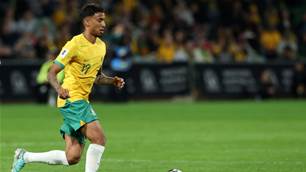
Socceroos midfielder embraces move to England
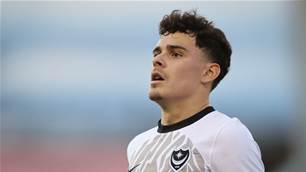
Cardiff City snap up sought-after Socceroos starlet
